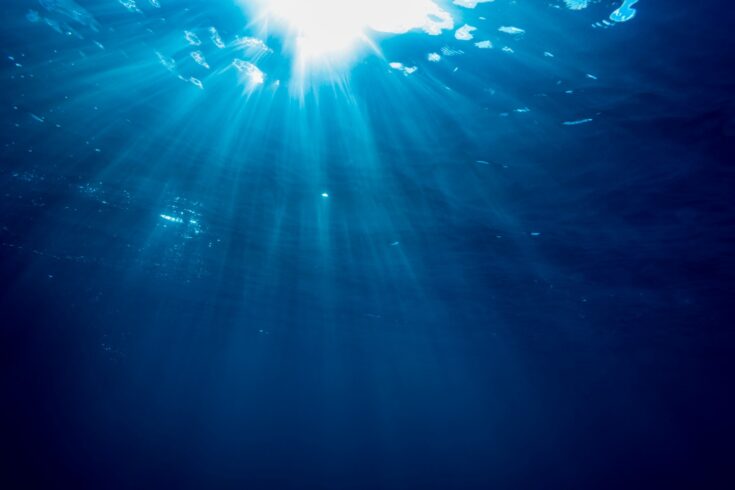Extremophiles are a category of organisms that can survive and thrive in the most extreme environments, from volcanoes to the deepest parts of the oceans.
One of the key properties of extremophiles that survive under high pressures (known as piezophiles) is the increase of biomolecule stabilising agents or ‘compatible solutes’ found in their tissues with increasing pressure.
In this study that involved a team from the Science and Technology Facilities Council (STFC), the impact of the compatible solute trimethylamine N-oxide (TMAO) on water structure was investigated to shed light on its protective mechanism.
Now that’s deep!
Biophysicists led by Dr Harrison Laurent from the University of Leeds collaborated with STFC’s ISIS Neutron and Muon Source to observe the mechanisms behind the survival of piezophiles that live in high-pressured ocean environments, like the Mariana Trench.
The Mariana Trench, 11 kilometres below the surface of the Pacific, has a pressure of 1.1 kbar or 8 tons per square inch. For comparison, 1.1 kbar or 8 tons per square inch is 1,100 times greater than the pressure experienced on the Earth’s surface, which would destroy human life.
Water molecules form a tetrahedron-like network when under normal or atmospheric pressure. At high pressures, like those in the Mariana Trench, this structure begins to distort and change shape.
As a result, the finely tuned balance of interactions between water and biomolecules that result in their functionality is also distorted, and the biomolecular processes required for life become increasingly ineffective until life is no longer possible.
Extremophiles that can survive in extreme pressures can maintain their biochemistry due to their adapted ability to accumulate organic molecules that stabilise biomolecules. TMAO is an example of one of these organic molecules that ensure the stability of extremophile cells and balance the interactions between biomolecules, such as proteins and DNA, and water.
Is it hydrogen? No, it’s deuterium!
The Near and Intermediate Range Order Diffractometer (NIMROD) at STFC’s ISIS Neutron and Muon Source is uniquely optimised for the study of liquids.
NIMROD specialises in hydrogen and deuterium exchange techniques, which allows users to swap hydrogen with deuterium. This technique does not change the overall structure but does allow much more detail on the liquid structure being measured.
Dr Tom Headen, Instrument Scientist responsible for NIMROD in this study, says:
This has been an interesting project to be involved in, gaining new structural information at a fundamental molecular level that has implications for understanding biology at the organism level.
The work brought together expertise from biophysics, neutron scattering, and computer simulation, not to mention our sample environment teams who enabled us to recreate these demanding high-pressure environments inside our instruments.
Coping under pressure
Using NIMROD, the researchers could study how intense pressure can alter the hydrogen bonds.
The researchers were able perform total neutron scattering of samples of water with and without TMAO at pressures of 25 bar and 4 kbar, enabling a comparison of the structural details between these 2 extremes.
It was revealed that hydrogen bonds in the pure water sample became distorted and less stable, resulting the overall network of water molecules becoming compacted. With the presence of TMAO, however, the hydrogen bonds between water molecules were strengthened and stabilised, and the structure of the network of water molecules was maintained.
School of Physics and Astronomy’s Dr Harrison Laurent stated:
The TMAO provides a structural anchor which results in the water being able to resist the extreme pressure it is under.
The findings are important because they help scientists understand the processes by which organisms have adapted to survive the extreme conditions found in the oceans.



